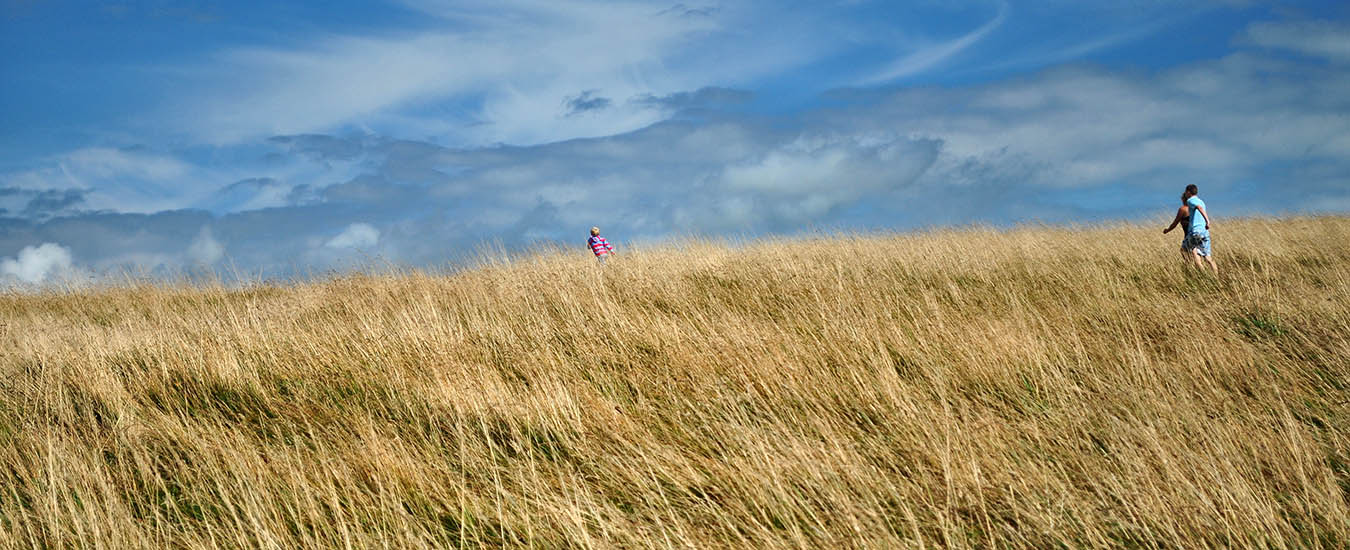When it comes to blowing in the wind, there's a lot on the line-and beauty is in the eye of the householder.
It's a fine line that first hooked Mrs. Clothesline, aka Cindy Etter-Turnbull in fall 2002. She and her husband, Chris, were driving to go fishing when she spied a good-looking line of clothes. "Now there's a fine line," she said. When they passed a second clothesline he asked if that one was a fine line too. "Absolutely not," Cindy replied and began to tell him what made a line fine and what didn't.
Thinking about clotheslines brought back fond memories of childhood and family. Chris told Cindy how his mother used to hook him to the line as a young child so he couldn't venture off. They laughed and reminisced. Cindy wondered if clotheslines stirred the sentiments of others. "Someone should write a book about clotheslines," she said. Newly retired, she decided right then and there that she would be that someone.

She spent two years researching how to read clotheslines. She spread the word about her project to seniors' groups, women's groups; people she knew were experienced clothesline users. She arrived for meetings with a large laundry basket full of clothes and a questionnaire in order to gather laundry techniques and tales. Her project surpassed her expectations when Stuart McLean of CBC Radio's Vinyl Café responded to her request to mention her project on the show. He invited Cindy to join him for a drive to spot clotheslines around Nova Scotia's Annapolis Valley; the shows from Wolfville and Halifax opened with their adventures. There was more national and regional exposure, and the mail poured in.
"I travelled Atlantic Canada to look at lines but I received mail from coast to coast," Cindy says. "People sent me stories, pictures, paintings and poetry."
The result is Fine Lines, a book of stories, techniques, photos and many fine and funny lines about clothesline culture that will no doubt hook readers.
There's a Tommy Douglas story in the book, a story from Africa.
A French Canadian tradition involved hanging a rosary on the clothesline the night before a wedding to ensure fine weather the next day. "When my husband proposed to me, I told him yes, but I had to have a clothesline before our wedding day," wrote one woman. "A few days before, I told him I was serious and he got busy and put one up for me."
Seniors in nursing homes told Cindy how much they missed their clotheslines. "Our lines are meaningful scripts, narratives of innocence and charm; the common parallels between our lives and our lines are strikingly similar. Our symmetry of expression represents our emotions and principles," Cindy writes.
Clotheslines have been used to hang cod or fishing nets and to hang live chickens in burlap bags to prevent them from setting. But when it comes to clothes, linens and the like, there are many versions of order and Mrs. Clothesline supports an individual's take on it. She prefers to hang items in order of size-sheets first, then large towels, pillowcases and facecloths. Similarly some people hang clothing by owner: husband's clothes, then wife's, then oldest to youngest child's. Some arrange by colour: whites to dark colours. The ability to read the logic behind the sequence helps to identify a fine line.
There are those who hang clothes straight or parallel to the line, others who create loops by letting the clothes drop in an arc between pins, those who turn things inside out or upside down. Pattern and consistency add to the appearance value. "Then there are the willy-nillies," Cindy says. These people hang clothes as they come out of the washer; no plan, no order and no fine line.
Fines Lines includes methods of hanging individual articles-for example the panty section offers some unusual techniques based on modesty and decorum-all written with homespun humour. Tips include leaving whites on the line through a frost or dense fog to help brighten them, and hanging a heavy sock as the last item on the line, closest to you-when the sock is dry, you know everything else is, too.
Soldiers in the Second World War had their own tips. When looking for a house to serve as a billet, they were advised to look for a broom outside the door to ensure it was a clean house with a warm welcome. However most preferred to check out the clothesline for silk slips and such-hoping for an even warmer welcome.
Bio: Fine Lines is written by Cyndy Etter-Turnbull (Pottersfield Press). Cindy is looking for clothesline stories for her next project, which could appear as a novel or a play. To contact her go to http://www.mrsclothesline.com.
